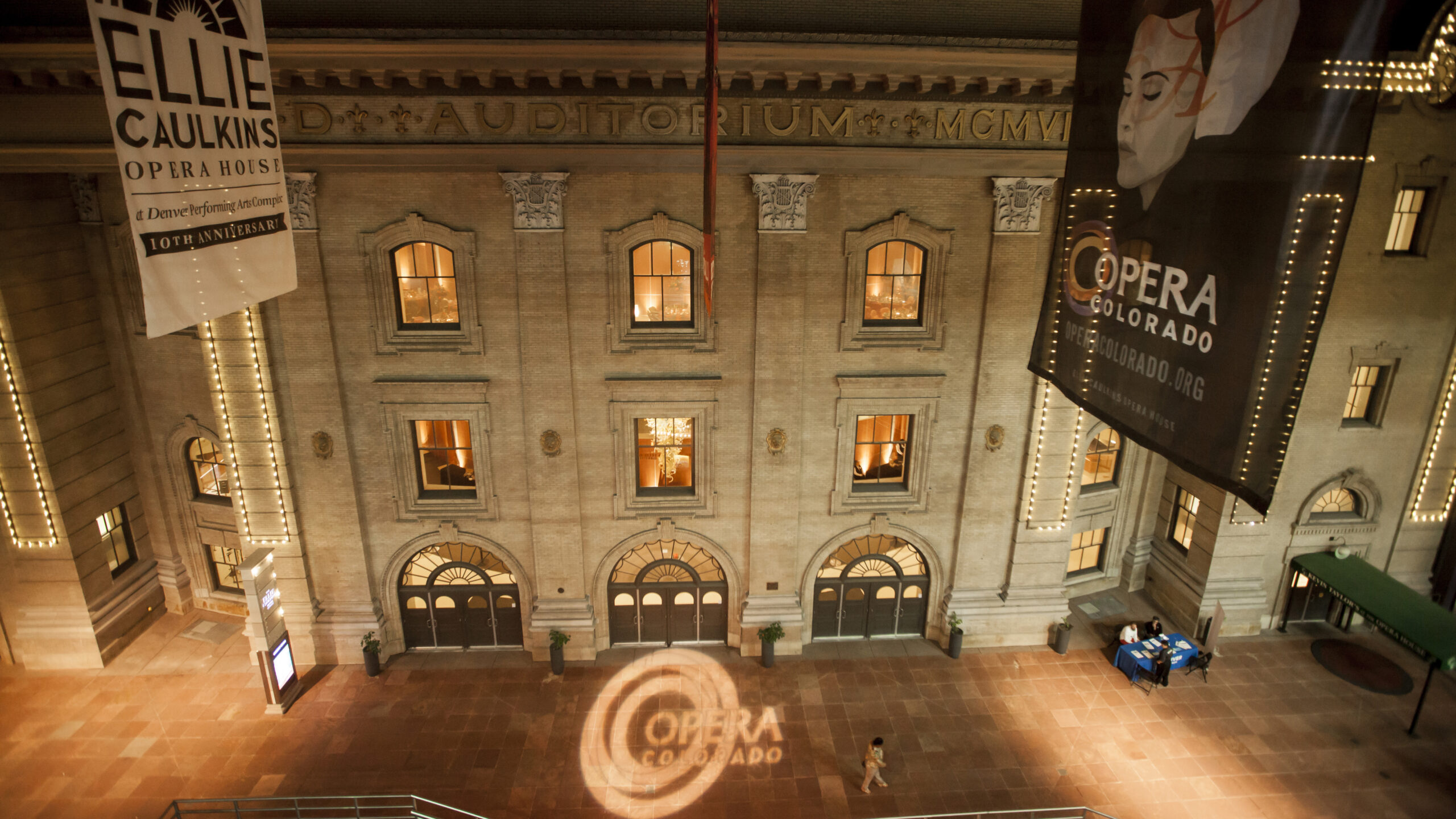Opera Explained: The History of Opera

Opera Colorado prides itself in being part of the grand tradition of opera, one that goes back centuries. The art form has a rich history full of operas you know and love, and see on our stage. Let’s explore opera’s origins and how it has evolved over time.
Where did opera originate?
It is difficult to credit one person with an entire art form; numerous influences went into the creation of opera. In fact, the etymology of “opera” means “a work, labor, composition.” This labor of love began in fifteenth-century Florence, Italy as scholars and musicians during the Renaissance sought to revive Greek dramas of the past. Music as a storytelling tool had been used before, but nothing quite like the opulence of opera.
This art had many components—music, sets, and drama—and was used by families like the Medici’s to show their wealth. Dafne by Jacopo Peri was performed around 1598 and is estimated to be the first opera. It was closely followed by the works of Claudio Monteverdi including Orfeo (1607) and The Coronation of Poppae (1643).
The Baroque Era of Opera
During the Baroque Era (1600-1750), opera was a spectacular affair in Europe. The music and arias were ornate and the works of German-British composer George Frideric Handel, like Giulio Cesare (1724) and Serse (1738), dominated the stage.
At this time, opera provided an exciting opportunity for women to perform in leading roles. Women were not allowed to perform on stage in ancient Greek dramas and even during Shakespeare’s time. While they could perform on stage in opera, women still faced many barriers. Some parts require a high voice, which would traditionally go to women whose voices types are sopranos and altos. However, some men, known as castrati, would alter their bodies at a young age to preserve their higher-pitched voices. This highly unethical practice eventually began to decline towards the end of the Baroque era. Today, young male characters are voiced by women in what is called a pants role.
The Classical Era of Opera
The Classical era (eighteenth century) of opera overlaps with the Enlightenment, a human-focused philosophy which took over large parts of Europe. Composers like Christoph Willibald Gluck sought to change the nature of opera to have more realistic plots and more relatable characters. There was a shift from the prestige of opera seria to opera buffa, a more comedic-focused opera. Some good examples of opera buffa during this time include Mozart’s The Marriage of Figaro (1785) and Don Giovanni (1787).
Check out Ryan Kuster’s performance as Figaro in our 2019 production of The Marriage of Figaro>>
The Romantic Era of Opera
The Romantic movement (nineteenth century) saw a change in the technical singing style of opera. A style called bel canto, literally meaning “beautiful singing” in Italian, was the popular technique for artists. Artists who perform these flowing melodies, like those in Giacomo Puccini’s La bohème (1896) and Tosca (1900), seem to have an unbroken quality in their lines.
Check out Anatomy of An Aria: Rafael Davila on “E lucevan le stelle” from Tosca>>
Wagner’s Influence
Richard Wagner (1813-1883) had a big impact on the history of opera. He made changes that still impact the way we view performances today. We can thank Wagner for Gesamtkunstwerk, meaning “total work of art” in German, which combines all aspects of the arts to make “music drama.” Wagner expanded the orchestra and included more and rarer instruments; a tuba is named after Wagner and his score for Das Rheingold requires six harps and eighteen anvils! Wagner also introduced leitmotifs, which connect melodies to characters, objects, or themes—think of the “Imperial March” which always introduces the arrival of Darth Vader.
We are performing Wagner’s The Flying Dutchman in the winter of 2024. Before you see it live, get a preview of Wagner’s work with “’Steuermann! Lass die Wacht!” performed by the Victorian Opera>>
Contemporary Opera
After World War II, most extravagances fell out of favor with the general public. Opera, like most artforms, had to change. Newer works often focused on a minimalist approach like scaling down the orchestra or using fewer set pieces. However, more advanced technology expanded the visuals of opera in a different direction. Operas are able to incorporate screens and film into their producions. Additionally, the characters no longer had to be fictional or archetypes. Opera could tell the history of real figures like John Adams’s Nixon in China (1987) or Philip Glass’s Satyagraha (1979).
One of our favorite modern operas is Moravec and Campbell’s The Shining, which made its regional debut with us in 2022.
Check out Anatomy of an Aria: Kevin Deas on “Keep Shining On” from The Shining>>
You’re an expert in opera history!
Congratulations, you are now an expert on opera’s rich history! The next time you enjoy an opera at the Ellie, think about where it started and how that impacts the audience’s experience today. Opera is still evolving; make sure to give exciting, new works a try and be part of the art form’s future!
Stay up to date on all things Opera Colorado when you subscribe to our newsletter>>



Wonderful overview.
Bravo
nice illustration